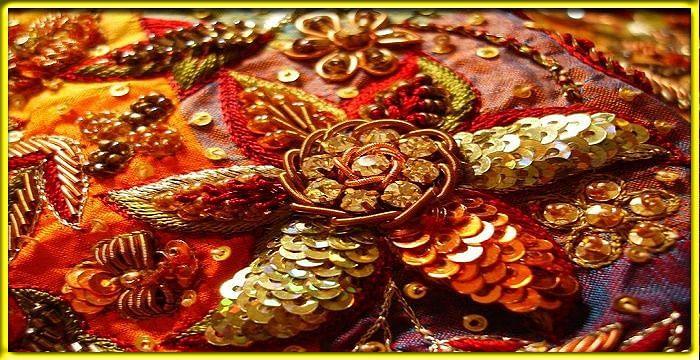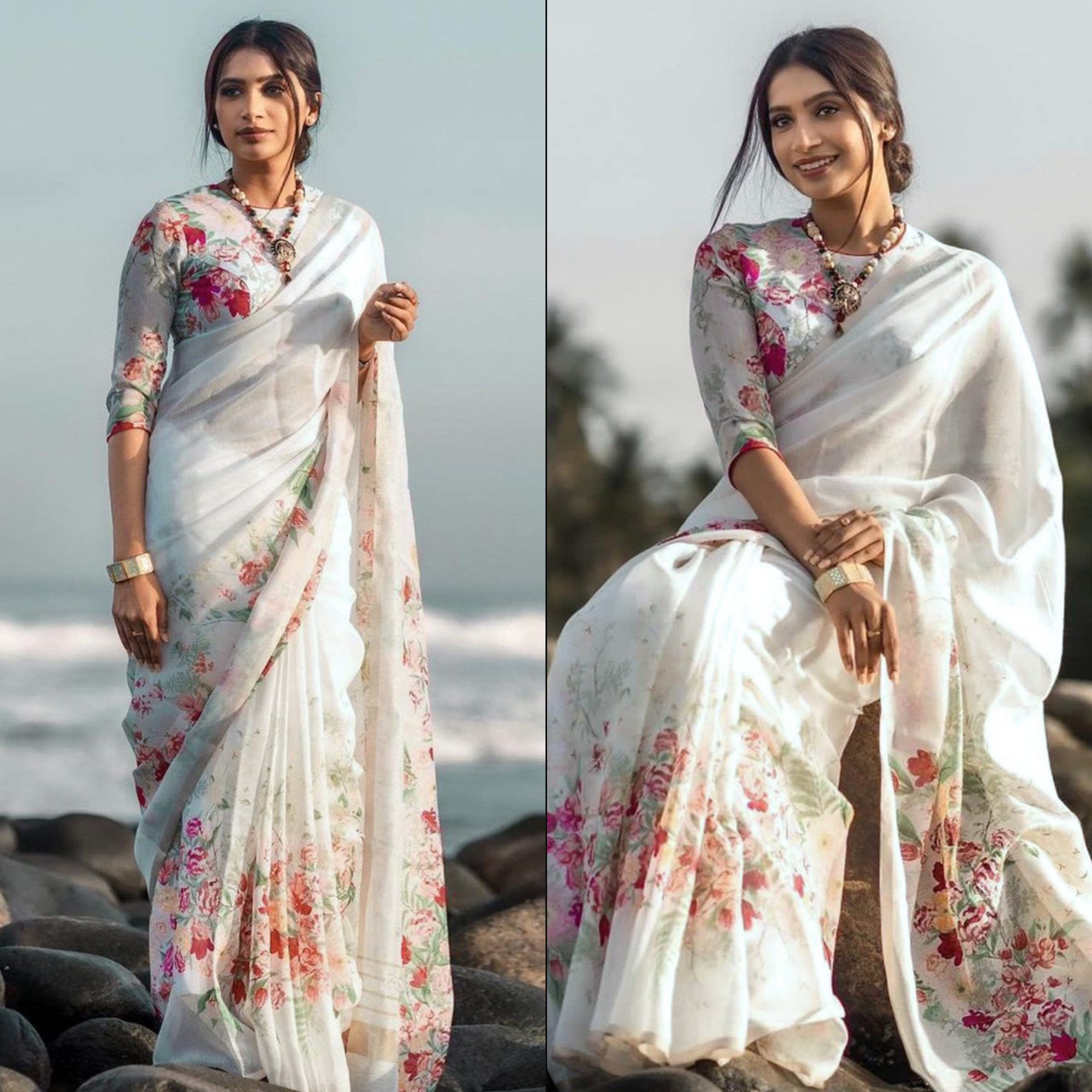Zardosi is one of the most embellished fabrics known today and just like the detailed handiwork that goes into making it, the story behind its origin is equally laced with an enriched heritage and culture.
The Golden Tale
An intriguing and interesting fact that weaves around zardosi is that though its origin finds its roots in the Persian era, ample evidence tilts in the direction of it being first known to the world of craftsmanship way back in the Vedic era. In fact, a lot of figures carved on the walls of Ajanta caves bear witness to this fact.
But from what the scriptures tell us, the zardosi art really got acknowledged and credited for only during the Mughal period. Akbar was believed to have developed a keen fondness for this highly talented skill of zardosi and ensured that the palacial walls, the pricely attires and the paintings adorning the décor of the palace- all be done up in zardosi embroidery.
In fact, pictorial evidences from the Mughal era and the Mughal places will invariably have on ething in common- the very intricately traced zardosi embroidery in gold with sheer elegance and precision. Along with Zardosi work, arri-tarri work too flourished during this period.
The ancient and authentic zardosi work involved usage of gold and silver drawn into threads along with some real precious stones and pearls. This increased the making cost of the cloth significantly and only the royals could afford this garment in those times. It flourished brilliantly among the aristocracy and was patronised extensively.

However with Aurangzeb becoming the successor to the throne, among all the oppressions that he inflicted on the general public, de- patronisation of craftsmanship was one of them. Zardosi artwork took a serious hit. With no sponsors for this expensive craft, the zardosi embroidery work saw a sharp fall. With no one to hire the, the skilled zardosi craftsmen had no option but to migrate to other parts of the country.
The art found some takers in the sates of Punjab and Rajasthan but with the introduction of industrialisation, this celebrated handiwork took a serious blow and was at the brink of extinction. It was only post independence that the zardosi work got revived.
The Zardosi Technique
In a typical set up and the traditional one, the craftsman sits cross legged alongside a wooden plank-table which is known as Addaa. This wooden framework comes with its own set of tools which include hooks, a wooden frame, needles with varied sizes of eyes, round-sequins, glass & plastic beads, salmaa pieces (gold wires), sitaaras (metal stars), dabkaa (thread) and kasab (thread).

A typical zardosi threadwork is done on velvet to give off a pure royal effect. However, the design to be embroidered is oftentimes traced out on cotton, silk and satin too. Once the design is traced, the fabric is stretched and fit onto the wooden frame and then by an accurate and skilled precision, the needled thread weaves its magic over the design.
In order to impression the design on the fabric where the embroidery needs to be woven, a special liquid is used which is a mixture of kerosene and chalk is made and is then rubbed onto the fabric using linen clothpiece. The liquid seeps through the holes of the linen and the design gets traced on the fabric.

To this day, zardosi is an extremely tenuous labor and is majorly done manually. A single zardosi embroidery saree takes anywhere between three to four working days and a minimum of five skilled craftsmen working on it.
Traditionally, the only type of zardosi embroidery done was in pure gold. However, to cut on the expenses and to tap more on the marketing part, craftsmen started using metallic wires and silver wires too to add some amount of variation to it. Instead of using pure stones, artificial ones are woven along with sequins.
The Zardosi Zest
Zardosi fabric has managed to carve a niche for itself even in today’s modish and contemporary fashion world. A fabric with grandeur factor as high as this’ zardosi has fascinated the old and the young generation alike. Be it zardosi sarees, zardosi lehengas, zardosi blouses and even zardosi for home décor, this fabric is a constant when it comes to adding a glint of royalty and aristocracy to our lifestyle.

The Bollywood industry and the fashion weeks too have an undeterred fondness for this fabric that very clearly showcases grandiose and magnificence.
What’s the best part is till today, the craftsmen have retained the age old tradition of weaving this beautiful fabric. That reflects on the enriched culture and glory of India which always has been a treasure trove of skill, talents and boundless craftsmanship.






















